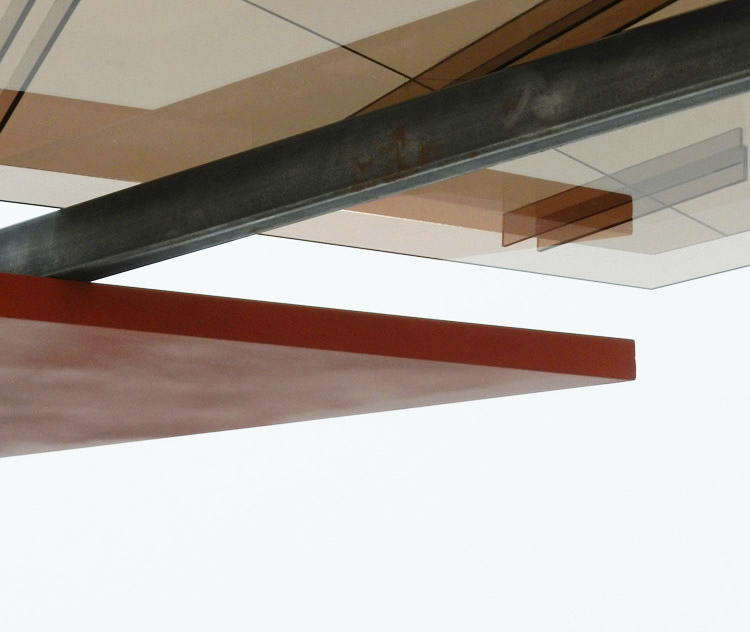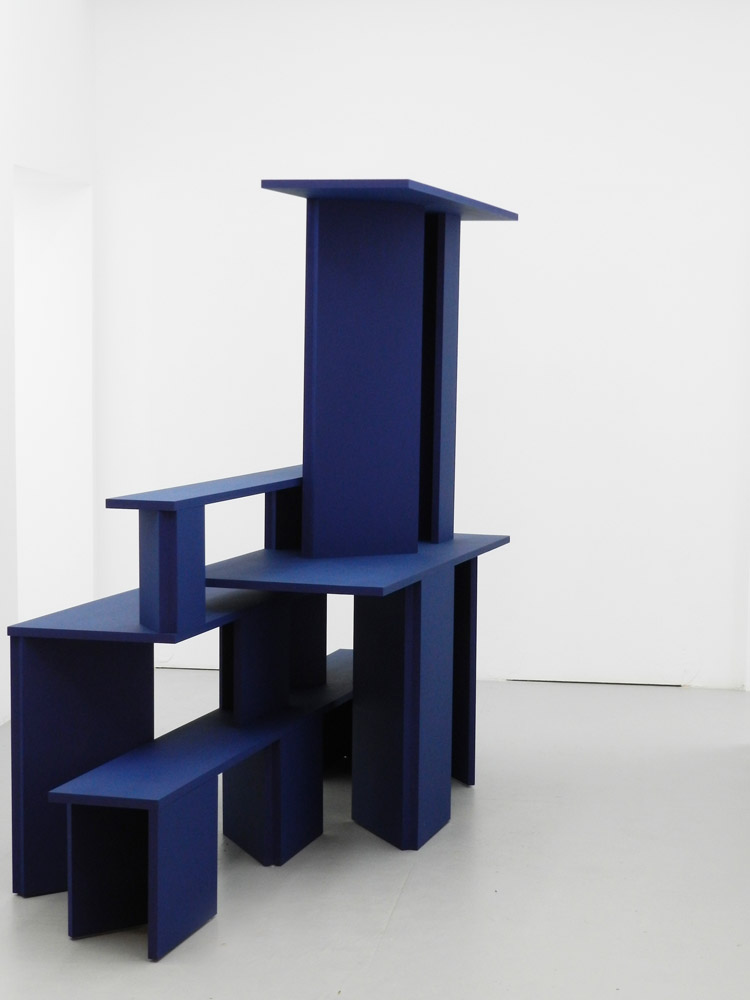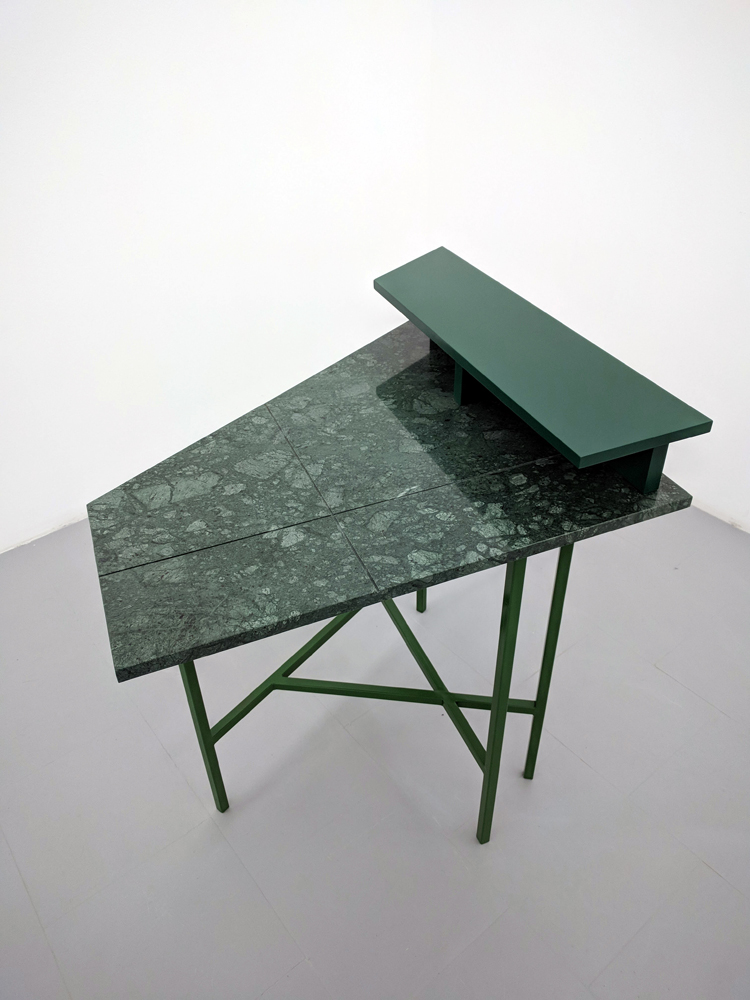
TOM VAN MALDEREN: EXCEPT FOR ACCESS ONLY
Eve Cocks [EC]: Tom, is Except for Access Only your first solo show?
Tom van Malderen [TvM]: It is indeed, and it is also my first opportunity to work in an official institute, under the capacity of what people would call an artist. My prime occupation for many years has been working as an architect so it’s a bit of an experiment both for me and for the MCA gallery (Malta Contemporary Art).
EC: What triggered your interest in the field of contemporary art?
TvM: I started experimenting with contemporary art installations during my student days, when I was studying architecture. I studied architecture at an arts academy so I was constantly surrounded by artists and creatives who were interested in the field. I made several, often collaborative, works at the time, exhibiting in the public realm and occasionally in a gallery in Rotterdam and stuff. Then I suddenly got busy with architecture, and forgot a bit about it. My interest started to revive again five years ago, when Michael Bock asked me to take part in a collective exhibition “HERMETIK” at Fort Tigne, Malta. Then a couple of years later, in 2015, I was approached by Norbert Attard to take on a public art commission for Pjazza Teatru Rjal, Valletta (I Saw A Light). Later that same year, Raphael Vella approached me to contribute a work for VIVA (Valletta International Visual Arts Festival). At the same time I also started designing exhibition spaces-structures for artists. When Mark Mangion, founder and director at MCA, asked me about seven months ago if I wanted to be one of the artists represented by the gallery, things got very excited and busy for me.

Detail from GAZEBO (monument for the public-private space), 2018, marble, timber, box steel, acrylic sheet and paint (plinth: chipboard and micro Led spots), 120 x 120 x 85 cm
Photo credit: evecocks.com
EC: Your work is multilayered with meaning. They are imbued with stories and reflections which bring forward questions related to accessibility, exclusivity, gentrification, hyper capitalism, rules and regulations…just to name a few.
TvM: They all reflect my way of engaging with social issues, or issues of our times.
EC: I have to admit that, I am glad to have attended one of your exhibition guided tours as I would have never been able – just by looking at the works – to grasp their real meaning. Not only do they prompt serious thought about current debates and issues, but they also reflect tendencies in the world of architecture and design.
TvM: I had an animated discussion recently with some friends and people from V18 foundation about the accessibility of contemporary art in Malta; that we (artists) should not just expect people to be able to engage with it immediately. It is a complex debate and like with most things in life, the experience gets better through practice and experience. Nonetheless, I decided to try and lower down the thresholds by organising a few guided tours. I also designed an exhibition leaflet giving hints and explanations about the works and give visitors something to hold on to or start with.

Tables for the 1 % – detail, 2018, marble, timber, box steel, paint, poster print, 80 x 80 x 90 cm
Photo credit: evecocks.com

Tables for the 1 %, 2018, marble, timber, box steel, paint, poster print, 80 x 80 x 90 cm
Photo credit: evecocks.com
EC: Well, contemporary art can be quite intimidating. Even I find it difficult at times to understand certain concepts, theories… let alone the casual viewer.
TvM: Yeah…And since the title of the exhibition is “Except for Access Only” I wanted to make sure to have the exhibition as accessible as possible. It is a pity when art becomes intimidating, but I am all in favour of works that challenge our views and thoughts.
EC: Can we consider the exhibition title as a work of art in itself – in the sense that, like each and every work on show, it has its own little story to tell?
TvM: I found the title in the Gozitan country side, on a homemade sign ‘protecting’ a piece of land. It came across as the perfect title for the exhibition so I appropriated it. I have always been intrigued with our obsessions to possess and protect, and how emotional it gets us, to the point that it often becomes absurd or comical. That’s exactly what happened here – someone very emotionally and determined misapprehended “except for access” or “for access only” in “except for access only”. Despite the starkness of the sign, I also found it funny. In a similar way, I try to embed a dose of humour in the sometimes-dark topics I highlight or question in my work.

ERNST (Neufert) I, 2018, timber, paint, 240 x 90 x 202 cm
Photo credit: evecocks.com

ERNST (Neufert) I – detail, 2018, timber, paint, 240 x 90 x 202 cm
Photo credit: evecocks.com
EC: As the viewer walks into the gallery space, he/she is confronted with a large-scale geometric wooden structure – ERNST (Neufert) I.
TvM: I named the work after the German architect Ernst Neufert. In 1936 Neufert had published a book (Architects’ Data) which today, it is still considered as a bible amongst architect and designers; it’s a reference book for measurements, ergonomics, standards…
EC: Is the work intended to be viewed as a sculptural or a furniture piece?
TvM: I wanted to create something a bit more sculptural and less functional. In the design and architectural world there is this love and hate for Neufert’s ideal regulations and standards; on the one hand everybody wants to break these rules but at the same time people keep on holding on to them and referring to them as they are all instruments designed to make production more efficient, and feed an economy based of growth. So I thought…what if I would take some of these ideal standards and put them in some sort of impossible, impractical piece of furniture (which is something usually not done). So I combined the best measurements (heights) for a bench, desk, exhibition table, desk counter and book case to make something less easy to evaluate, less functional. Nonetheless, some visitors still told me how they “would love to use it” – imagining themselves using it as a hybrid bookshelf, writing desk and storage objects. It delights me that the status of the object is uncertain, and some would like to retain it as a sculpture whilst other see it as a ‘useful’ object.
EC: Its abstract flat planes and primary blue colour reminds me of the sculpture-architecture models of De Stijl.

Reflective Tree Guard – detail, 2018, timber and acrylic, 83 x 83 x 20 cm
Photo credit: evecocks.com
Tvm: You are not the first person that told me this. I must say that I’ve been confronted with the work of De Stijl at a very young age, I think way before I’ve studied architecture. I’ve always been intrigued by the fairly simple structural connections and complex formal outcome of the work by De Stijl, so I cannot deny that I might be subconsciously influenced. However, I find there are so many fascinating practices in art, design and architecture that I find it difficult to say that I’m consciously focusing on this or that. Besides, I don’t believe in heroes.
EC: Which work or works do you consider as your most experimental?
TvM: Tables for the 1%, and the ritual posters (#RITUAL 1* and #RITUAL 2*) – images below. Both the production of the tables and the production of the rituals are a bit of a fantasy take and my look at the world of the 1% (the group that financially holds the world) and their strange way of thinking. In an imaginary world these tables would have been used by these exclusive group of people to perform rituals (#RITUAL 1* and #RITUAL 2*).
EC: Are the ritual posters based on real rituals?
TvM: They are invented; they are based on a number of articles that I had found and some research I did about the world of the one percent. They also make reference to others existing work. The sentence “don’t protect me from what I want” in #RITUAL 2*, for example, is a reference to contemporary artist Jenny Holzer who used “protect me from what I want” in one of her works. So I’ve been linking a lot of items into it. Nonetheless, a friend of mine – who works in the finance sector – told me that the lingo I use in the rituals is the same kind of speech entertained by certain people in the world of finance.

Tables for the 1 %; #RITUAL 1* & #RITUAL 2*, 2018, marble, timber, box steel, paint, poster print, 80 x 80 x 90 cm
Photo credit: Tom van Malderen; Malta Contemporary Art

#RITUAL 1* & #RITUAL 2*, 2018, A1 posters
Photo credit: Tom van Malderen; Malta Contemporary Art

Tables for the 1 %, 2018, marble, timber, box steel, paint, 80 x 80 x 90 cm
Photo credit: Tom van Malderen; Malta Contemporary Art
EC: How did your idea to associate tables with the group of the 1% come about?
TvM: Something that has been striking me for a long time now is that the bigger the house, the more tables you will find. Especially in the houses of the rich, be it historic or contemporary examples, you will find a vast array of coffee tables, side tables, bedside tables or games tables. Then there is the association of the rich being part of exclusive groups, organisations and societies who group around or perform certain initiation rituals around table-like structures.
EC: During the talk you’ve said that the legs that you’ve designed for the Tables for the 1% were influenced from Portolan maps (navigational maps) – I found it particularly interesting.
TvM: Portolan maps were an invention from the 15th and 16th century and they were very instrumental for the colonization of the worlds – through which the one percent (this exclusive group of rich people) started to grow. I am constantly making reference to sources or ideas that allude to their exclusive environments. The groves in the marble tops, for example, are other details which point to their world of lush details and exclusivity.
EC: What questions or reflections would you like to bring forward with the tables and rituals.
TvM: I’ve always been fascinated with the dynamics of our society, in the sense that, although we are critical of the one percent, deep down most of us aspire to be part of it – to take part in this kind of exclusivity, power and wealth. I just see it happen around me.

Pipes and Tassels (I), 2018, copper pipe, mounting brackets, tassels, 60 x 20 cm
Photo credit: evecocks.com

Pipes and Tassels (II) – detail, 2018, copper pipe, mounting brackets, tassels, 60 x 20 cm
Photo credit: evecocks.com
EC: Your interest in integrating language into art – in order to make people reflect on the meaning of the work – is very conceptual in nature.
TvM: This is the first time that I’ve shown text in my work. I used to experiment with this idea of text and image during my academy days but – as I already explained at the start of our discussion – I had stopped exploring it for a while to focus on architecture. I like experimenting with different forms of writing; which I think I made it quite evident in the exhibition leaflet – where I included virtual letters and conversations. Reflective Tree Guard (image above) is another work on show which plays with words that can be interpreted by the visitors in their own way. Some may find it poetic or ironic, possibly meaningless or something totally different.
EC: For the end, could you share some insights on Pipes and Tassels (images above).
TvM: I’ve called the work Pipes and Tassels as it’s actually made of copper pipes and tassels. The work partially reflects my world as an architect where there is this continuous clash between functionalism (the practical side) and formalism (the aesthetic side). Nonetheless, the driving energy behind the work is the materials (the pipes and the tassels) shift in meaning as a result to our hyper capitalist society. Tassels used to be very precious handmade objects full of special meaning. They used to represent a certain standing, mobility, value…They were even talismans at certain points in time and they used to be very expensive. Today they’ve become vulgar and cheap as chips (even cheaper). On the other hand, the copper pipe has become more expensive. Therefore, the value of the tassels and pipes has shifted. So for me again it’s an open question to the audience: should this be normal? Is it something that we should think about a bit more? All these things that once had a strong symbolic meaning are today being lost. They’ve become totally devaluated because of our consumerist way of producing things; there has been a total reversal of value in the system. Another personal anecdote, I’ve bought the tassels from the two remaining haberdashery shops in Valletta. Rest assured that with the gentrification rushing through the city, they are not going to last for long. For me it was very important to buy these tassels and have them present in the show as a sort of statement, as a memory of what is being lost.

Tom Van Malderen and ERNST (Neufert) I
Photo credit: evecocks.com
EXCEPT FOR ACCESS ONLY IS BEING HELD AT MALTA CONTEMPORARY ART, 12 FELIX STREET, VALLETTA, UNTIL SATURDAY 21ST APRIL. YOU CAN READ MORE ABOUT TOM’S SHOW AND PRACTICE ON tomvanmalderen.com
